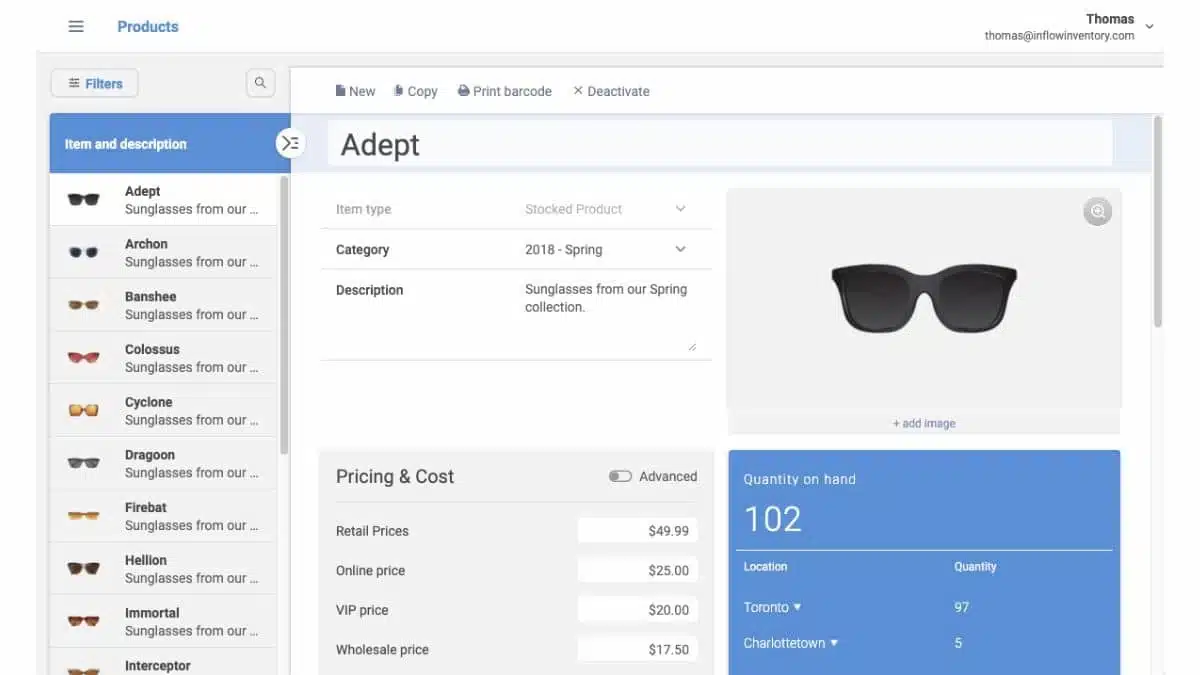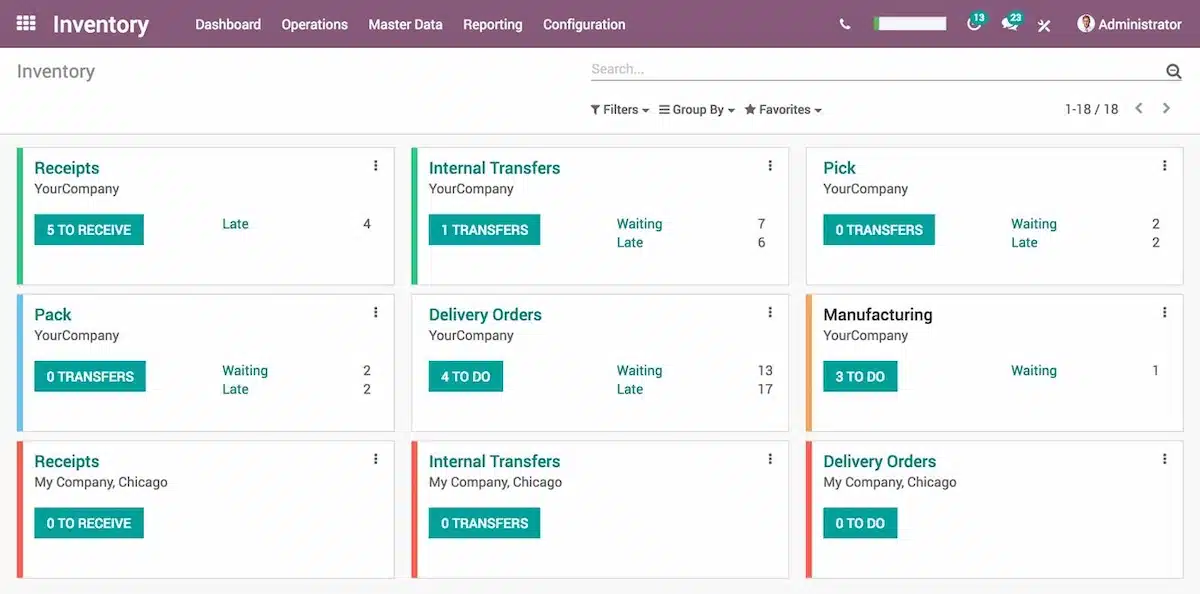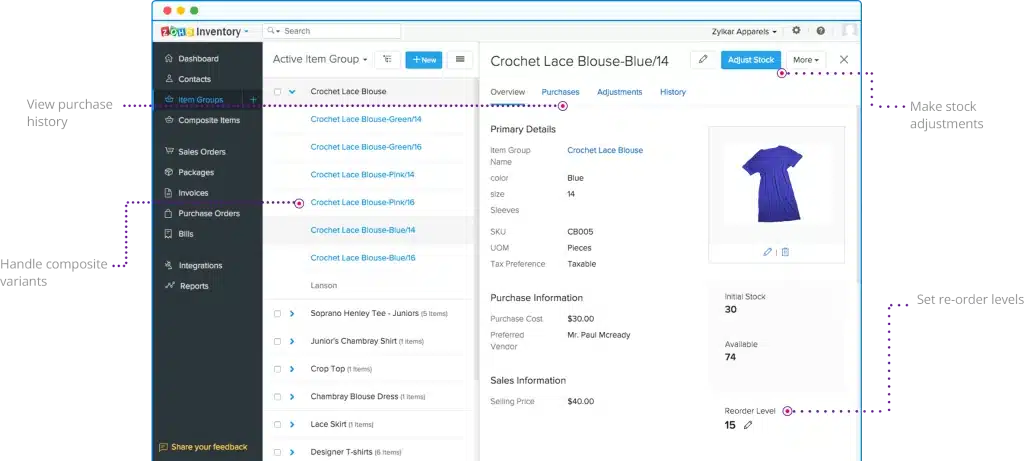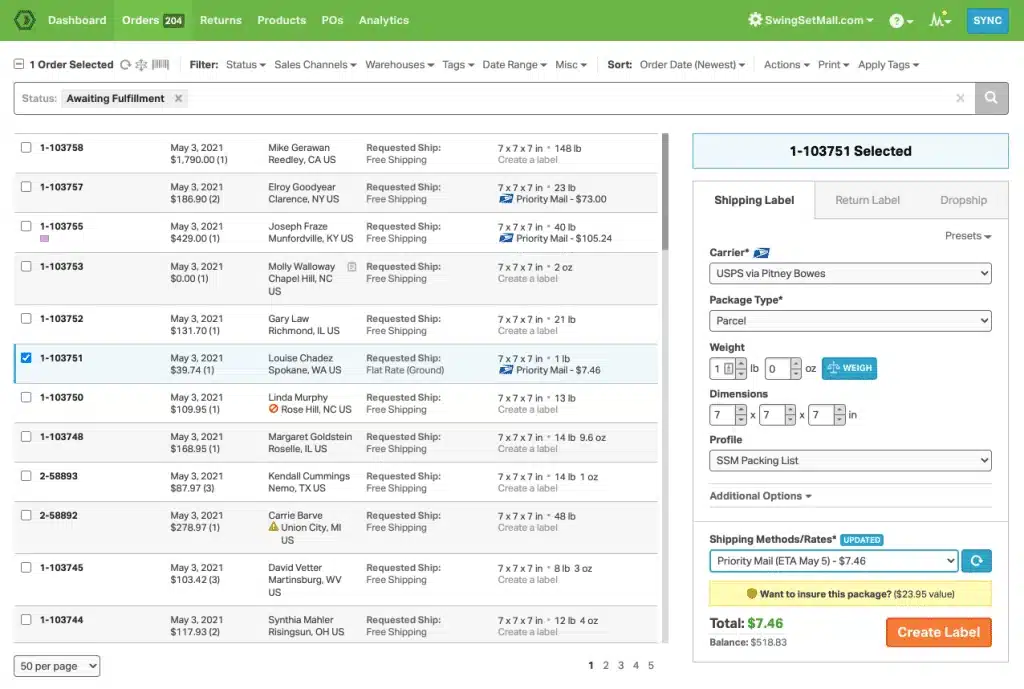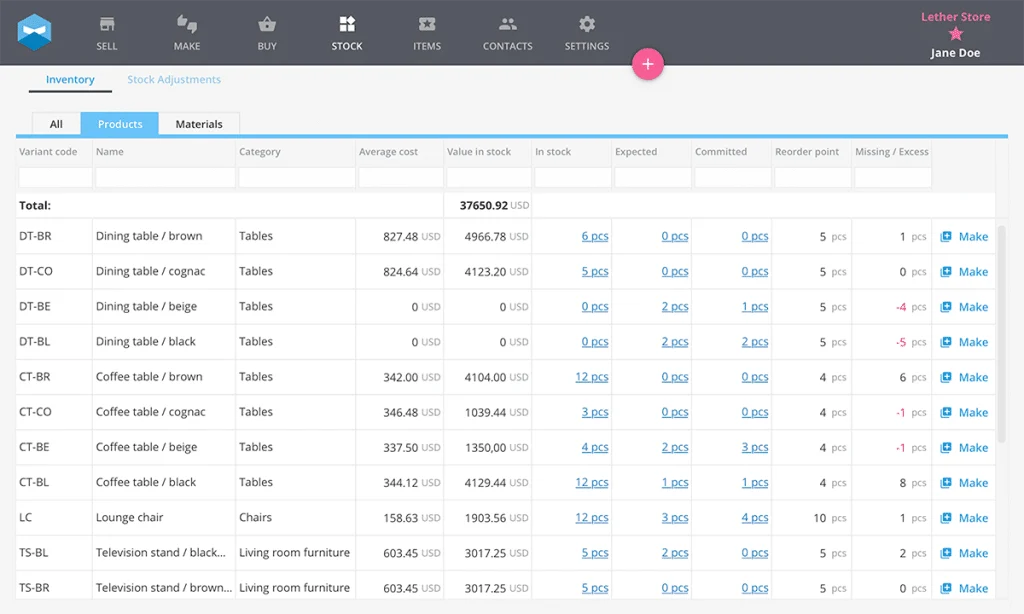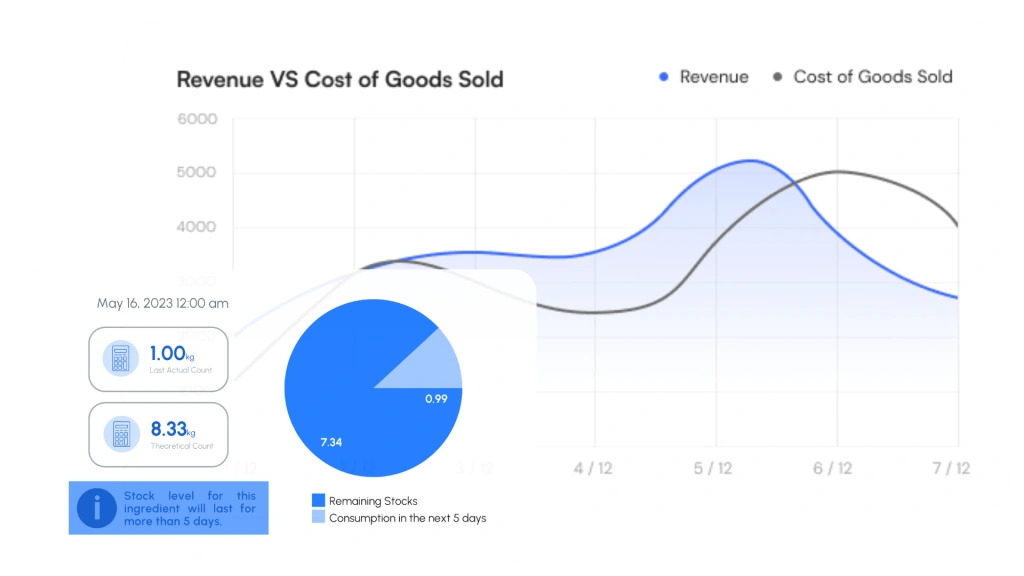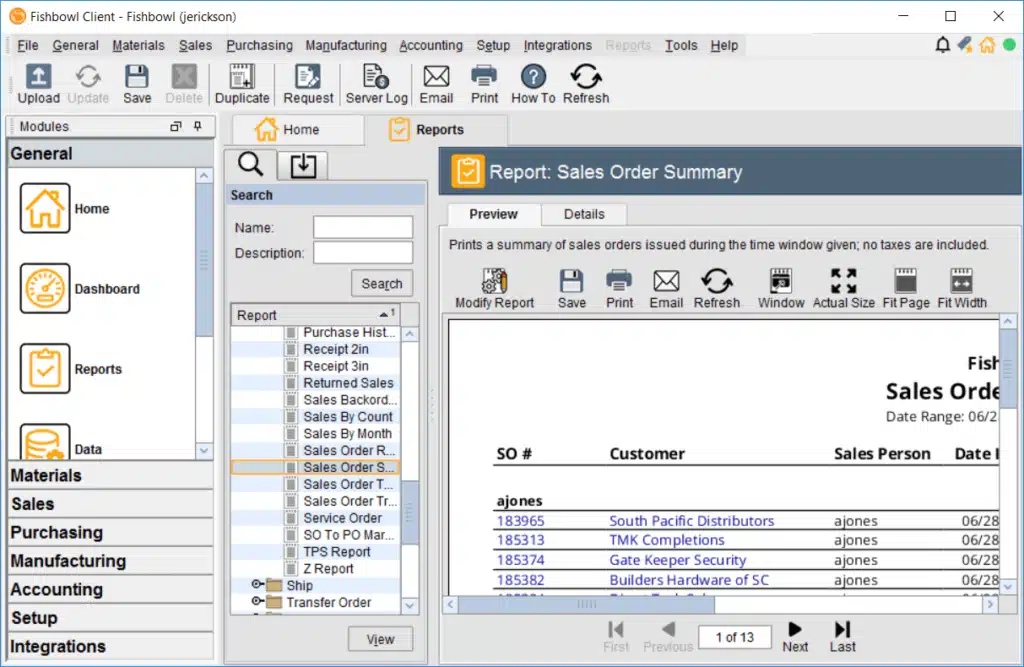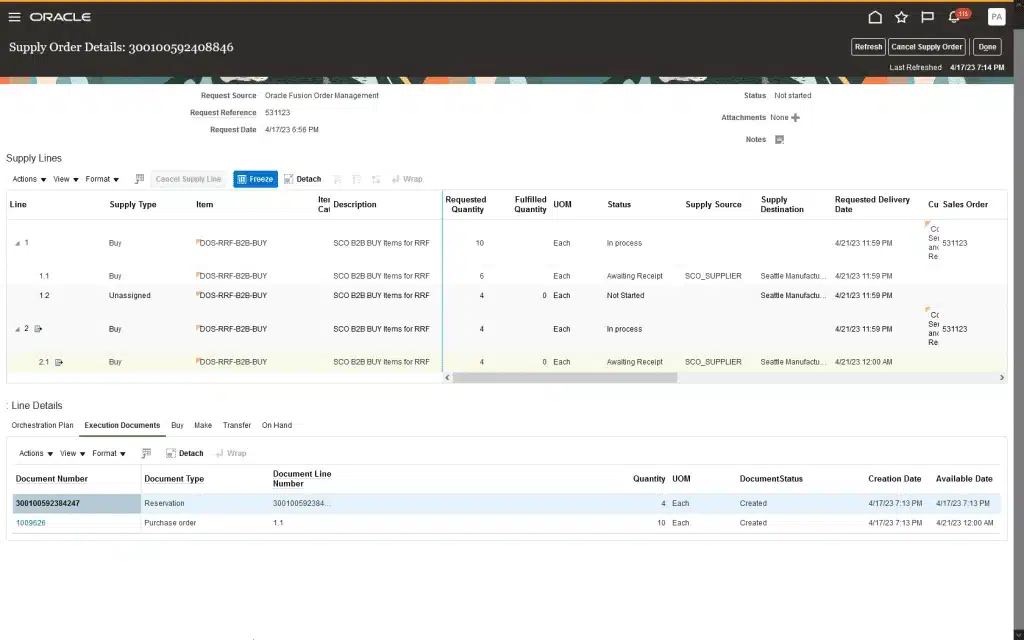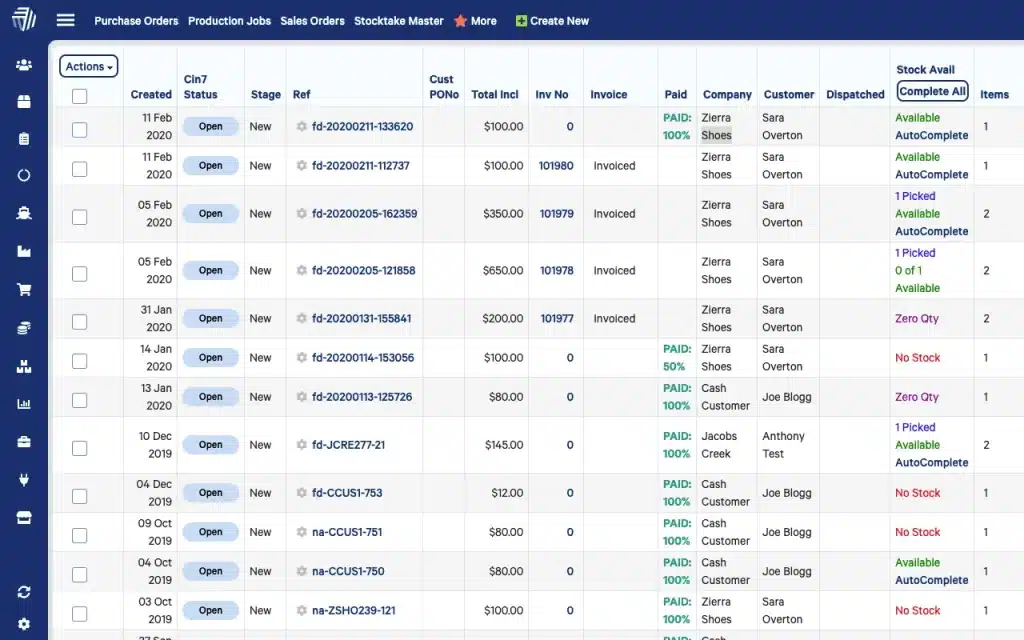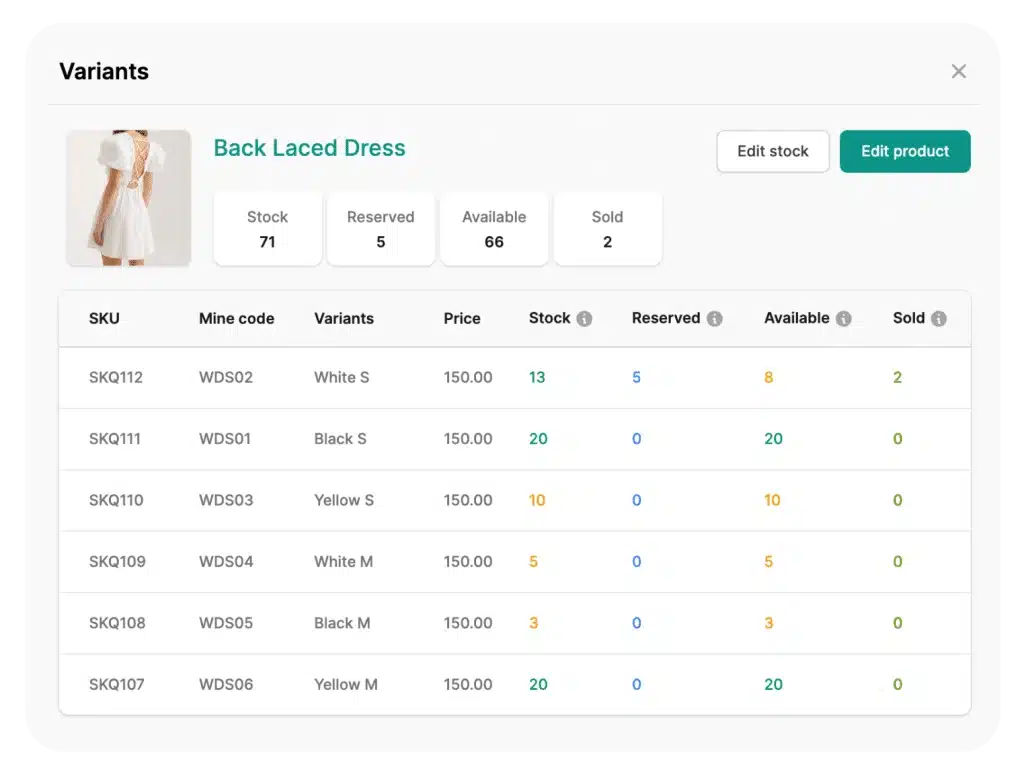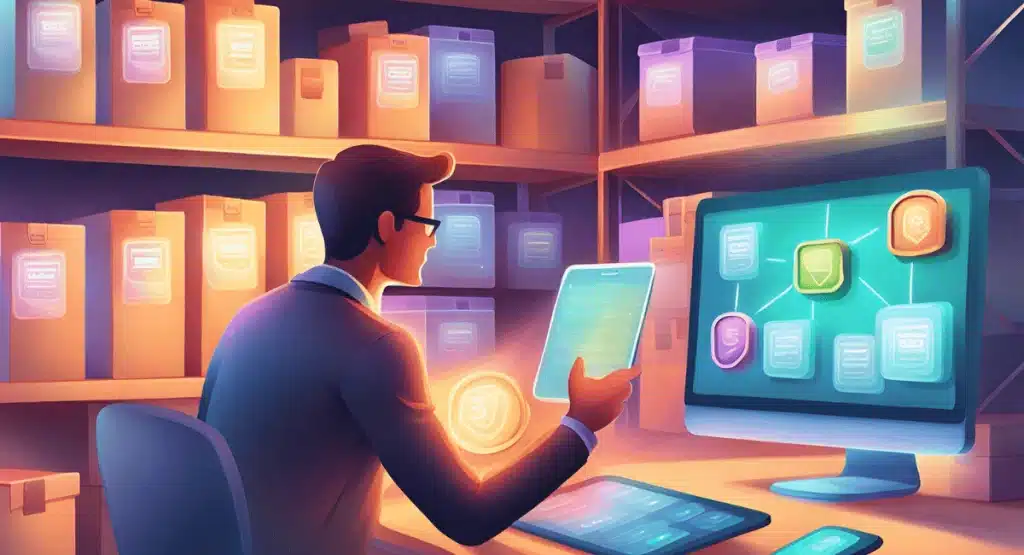Hay naku! Are you still managing inventory manually by paper or with spreadsheets? That’s risky! Poor inventory management leads to lost sales, waste, extra costs, and damage to your reputation. Pero paano kung may mas maganda pang paraan?
According to McKinsey & Co., AI-integrated inventory management software can reduce logistics costs by 15%, inventory levels by 35%, and service levels by 65%. So, that could be the ideal way to manage stocks, right? Especially since the world is going digital at a speedy rate.
That being said, are you struggling to choose the right inventory software? You can try HashMicro’s Inventory Management Software, which offers a robust system for tracking inventory, optimizing order management, and optimizing the spaces in your warehouse(s).
We’ve also compiled a list of the best inventory management software in the Philippines, such as HashMicro, Quickbooks, Inflow, Sortly, and Odoo, to help businesses optimise stock management. Pagandahin natin ang iyong pamamahala ng imbentaryo nang magkasama!
Table of Contents
Key Takeaways
|
Top Inventory Management System at a Glance:
- HashMicro: Best for complete and scalable inventory management
- QuickBooks: Best for small businesses needing accounting integration
- Inflow: Best for multi-location inventory tracking
- Sortly: Best for visual inventory tracking with a user-friendly interface
- Odoo: Best for highly customizable inventory management
- Zoho: Best for startups needing scalable inventory solutions
What is Inventory Management Software?
Inventory management software is a complete system that tracks, organizes, and oversees inventory. It automates real-time tasks to monitor stock levels, orders, sales, and deliveries. This software ensures accuracy, reduces manual errors, and enhances operational efficiency.
Businesses need inventory management software to avoid common pitfalls such as stockouts, overstocking, and human error. Did you know human mistakes in inventory management can be costly? In 2025 alone, retail shrink (inventory losses from theft, errors, and fraud) cost the industry over $132 billion.
Inventory management software benefits businesses in several ways:
- Automates inventory tracking and management, which reduces the risk of human error
- Provides real-time visibility into inventory levels and enables data-driven decisions
- Simplify tasks to track stock levels, orders, sales, and deliveries in real time
- Improves supply chain efficiency and reduces lead times
There are two common types of inventory management: periodic and perpetual. Periodic inventory systems involve periodic stock counts, while perpetual inventory systems provide real-time tracking for optimized supply chain management.
By integrating order processing, businesses can see significant improvements: a 25% boost in productivity, a 20% improvement in space usage, and a 30% increase in stock efficiency.
Need to know!
Hashy AI from HashMicro optimizes inventory management by automating restocking and tracking multi-location stock, helping businesses reduce costs and improve efficiency.
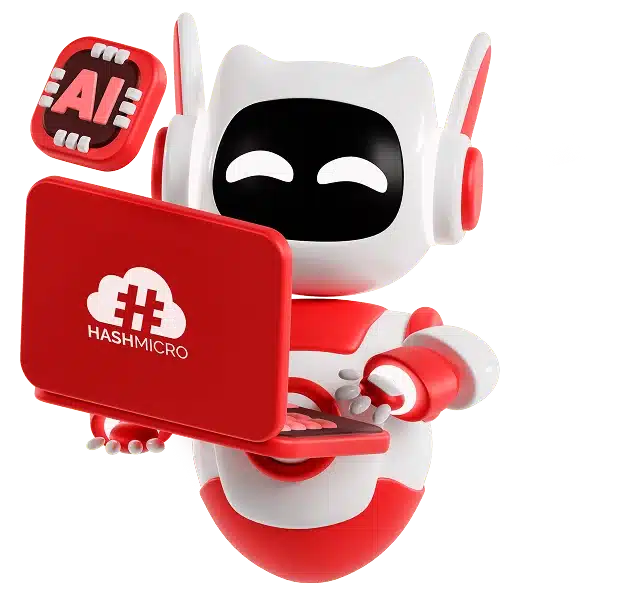
Get a Free Demo Now!
15 Best Inventory Management Software in 2025
Have you ever been confused by the many online cloud inventory software options in the Philippines? Each vendor has pros and cons, making choosing the right one challenging.
But don’t worry! We present the 15 Best Inventory Management Software & Systems in the Philippines (2025). Perhaps you might find the perfect solution in our guide. Now, without further ado, let’s get started!
1. HashMicro Inventory Software
HashMicro is powerful inventory management software built for Filipino businesses across wholesale, retail, F&B, and manufacturing sectors. It makes inventory tracking effortless and provides accurate, real-time stock updates.
It’s also the top choicefor Filipino businesses looking for an all-in-one localized, scalable, and user-friendly system with unlimited users, and offers upfront cost.
HashMicro Inventory Software excels with customization according to business needs, as well as real-time analytics, integration with systems like finance, point-of-sale (POS), procurement, and CRM.
From stock tracking, sales tracking, warehouse management, to purchasing and delivery, companies manage everything clearly in one place—no more scattered systems, messy paperwork, or delayed orders.
The companies can try it risk-free with a free demo; no commitment or credit card information required.
HashMicro key features:
- Stock forecasting with automated reordering: Never worry about running out of stock. HashMicro automatically predicts restocking needs based on real-time sales trends.
- Analysis of fast and slow-moving stocks: With this feature, you can identify which products sell well and which don’t. This insight helps you always to stock what sells.
- Putaway Strategies: Organize your warehouse smarter. The system suggests optimal product placement based on category, demand, or available storage capacity.
- Streamlined stock requests: With this feature, you can simplify internal stock requests across departments or branches with an automated approval system.
- Stock reservations and reporting: With this feature, you can reserve stock for specific customers, projects, or branches, which prevents accidental allocation elsewhere.
- Stock optimizer per warehouse: With this feature, you can balance stock levels across multiple warehouses, avoiding overstock in one location and shortages in another.
- Barcode, QR & RFID Integration: Its barcode inventory systems instantly track your inventory movements—scan barcodes, QR codes, or RFID tags to eliminate manual errors and speed up stock audits.
- QC Management: Keep quality in check. Automatically flag defective goods during incoming and outgoing inspections, so customers receive only your best products.
| Pros | Cons |
|
|
HashMicro has helped top enterprises in the Philippines simplify inventory management with top-notch support and outstanding software. Now, businesses in the Philippines can experience the same excellence across all industries.
To see how HashMicro can transform your inventory management and contribute to your success, get the pricing scheme to know the pricing calculation of the software customized for your business needs below.
2. QuickBooks Inventory Software
QuickBooks is an inventory management software designed for businesses. It offers inventory control, warehouse and order management, and batch and expiry tracking features.
QuickBooks inventory software Philippines helps companies to streamline their inventory processes and provides a variety of affordable packages suitable for businesses of all sizes.
QuickBooks key features:
- Accounts payable management
- Order tracking
- Sales fulfillment
- Inventory and related costs tracking
| Pros | Cons |
|
|
3. Inflow Inventory Software
Inflow is an inventory management software provider that focuses on simplifying inventory processes for Filipino businesses across industries. Since its inception, Inflow Inventory Software Philippines has aimed to provide intuitive software solutions.
The company has built its reputation on offering tools that help companies manage their stock levels. It’s straightforward inventory software reduces manual errors and enhances operational efficiency.
Inflow key features:
- Barcode scanning
- Multi-location inventory tracking
- Order management
- Reporting and analytics
| Pros | Cons |
|
|
4. Sortly Inventory Software
Sortly is modern inventory management software designed for small—to medium-sized businesses. Founded to simplify inventory processes, it offers an intuitive, visual interface that makes managing inventory easy.
The software is particularly popular among businesses that require a straightforward and visually appealing solution for inventory tracking.
Sortly key features:
- Visual inventory tracking
- QR code scanning
- Customizable fields
- Mobile app access
| Pros | Cons |
|
|
5. Odoo Inventory Software
Founded in 2005, Odoo has become an inventory management solutions offering a wide range of business applications. Odoo’s inventory software in the Philippines is known for its flexibility and integration capabilities.
Odoo strives to provide a comprehensive business management solution focusing on streamlining operations and improving efficiency through integrated software modules.
Odoo key features:
- Automated replenishment
- Multi-warehouse management
- Barcode integration
- Real-time stock levels
| Pros | Cons |
|
|
6. Zoho Inventory Software
Zoho offers inventory management software with comprehensive features at competitive pricing, making it attractive for startups and expanding businesses. Their software covers order management, inventory tracking, and shipping, catering to various shipping-based businesses.
Time-saving features like autofill purchase orders, one-click dropship management, and multi-warehouse management are also available. Additionally, Zoho inventory software Philippines higher-tier plans accommodate large-scale sellers, allowing businesses to start small and continue using Zoho as they grow.
Zoho key features:
- Multi-warehouse management
- Serial and batch tracking
- Item grouping and bundling
- Packaging and shipping
- Sales order management
| Pros | Cons |
|
|
7. Ordoro Inventory Software
Ordoro is cloud-based software for inventory management and order fulfillment. It was created to simplify the management of e-commerce orders and inventory for online retailers.
It provides various features to assist businesses in efficiently managing their inventory, orders, shipping, and suppliers from one central platform.
Ordoro aims to simplify the complexities associated with e-commerce order fulfillment and inventory management, helping businesses process orders efficiently, optimize inventory levels, and provide a seamless customer experience.
Ordoro key features:
- Inventory management
- Purchase orders
- Order management
- Shipping management
| Pros | Cons |
|
|
8. Katana Inventory Software
Katana’s comprehensive inventory management software efficiently addresses various businesses’ order management, inventory tracking, and shipping requirements, including e-commerce, multichannel, and B2B operations. Its primary advantage, however, lies in its effectiveness within the manufacturing industry.
Katana offers a wide range of inventory management software features tailored to the needs of manufacturers. These include capabilities such as barcode-based parts tracking, production planning, assembly tracking, storage and shop floor management, supplier logistics, and numerous other functions essential for manufacturing operations.
Katana key features:
- Location management
- Multiple warehouses
- Stock Inquiry
- FIFO, LIFO, Weighted Average
- Stock movement
| Pros | Cons |
|
|
9. Mosaic Inventory Software
Mosaic Solutions offers an inventory management system with features including intelligent purchasing, real-time analytics, and inventory cost monitoring. Established in 2016 and headquartered in Manila, Philippines, Mosaic inventory software is a technology provider for food businesses, retailers, and malls nationwide. It aids them in streamlining operations and improving decision-making through data analysis.
Mosaic POS systems are integrating with third-party delivery apps to advanced data analytics and inventory management, providing businesses with the tools and knowledge necessary for success.
Mosaic key features:
- Multi-location inventory management
- Stock replenishment
- Integrated with POS software
- Inventory overview
| Pros | Cons |
|
|
10. Fishbowl Inventory Software
Fishbowl is a construction inventory management software serving businesses for over two decades. This vendor has a rich set of features that caters to the construction, manufacturing, and warehousing industries.
The inventory software Philippines is robust in handling complex inventory needs, such as multi-location management and advanced order processing. Fishbowl provides a cohesive solution for businesses.
Fishbowl key features:
- Multi-location inventory management
- Advanced order processing
- Integration with QuickBooks
- Barcode scanning
| Pros | Cons |
|
|
Read More: Top Manufacturing Inventory Software
11. Shopify Inventory Software
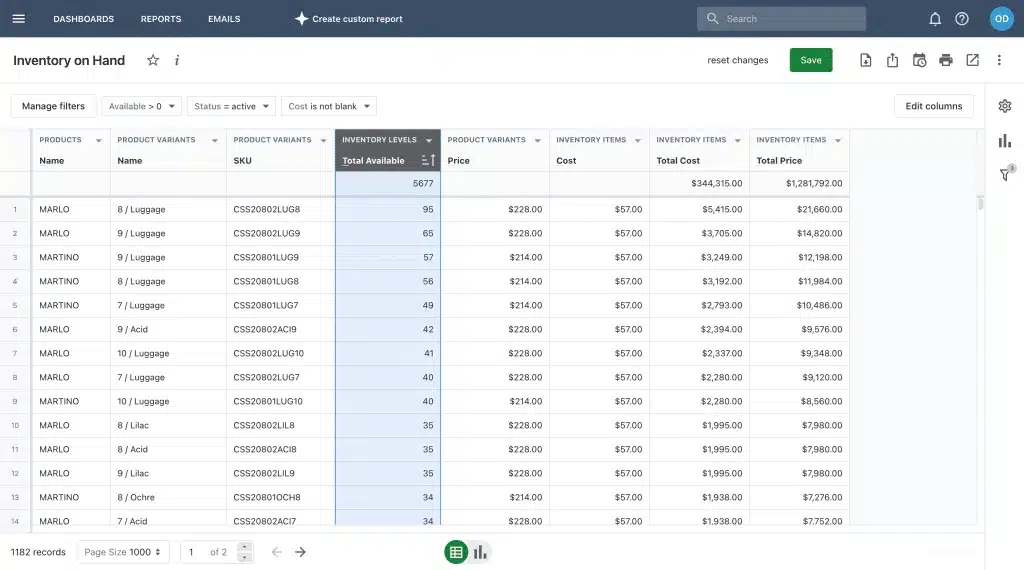
Shopify operates on a subscription model as a software-as-a-service (SaaS) platform Philippines. Users pay a fee to use the platform, which includes access to tools for designing and managing their online stores and hosting services.
It’s important to note that a Shopify inventory software Philippines website cannot be transferred to other e-commerce platforms; sellers must maintain an active Shopify account to keep their site operational.
Shopify key features:
- Inventory tracking
- Purchase orders
- ABC analysis
- Multi-location management
| Pros | Cons |
|
|
12. Monday.com Inventory Software
Monday.com is an inventory management system founded in 2012. This vendor has gained popularity for its user-friendly interface. Monday allows businesses to create custom workflows for inventory tracking and management.
Its visual and collaborative inventory management software tools make it ideal for teams looking to manage inventory alongside other business processes in the Philippines.
Monday.com key features:
- Visual dashboards
- Automated notifications
- Task prioritization
| Pros | Cons |
|
|
13. Oracle Inventory Software
Oracle Inventory is a part of Oracle’s enterprise resource planning (ERP) software solutions, specifically designed to help businesses efficiently manage their inventory and supply chain operations.
It offers a range of features, such as a real-time inventory tracking system, order management from receipt to fulfillment, and effective supplier management. The software also includes warehouse management tools for inventory storage, picking, packing, and shipping.
Additionally, Oracle Inventory software provides reporting and analytics capabilities for businesses to gain insights into their inventory and supply chain performance. Overall, it is a comprehensive solution aimed at streamlining inventory and supply chain operations, improving efficiency, and reducing business costs in the Philippines.
Oracle key features:
- Product expiry management
- Stock aging report
- Integrated with barcode and QR code
- Material request management
| Pros | Cons |
|
|
14. Cin7 Orderhive Inventory Software
Cin7 Orderhive is an inventory app in the Philippines designed for online retailers. It allows integration with channels like Amazon, eBay, Shopify, BigCommerce, QuickBooks Online, Etsy, and Magento, enabling automated inventory control and streamlined shipping processes.
With Cin7 Orderhive, retailers can efficiently manage inventory across multiple warehouses and locations. Additionally, users can easily access real-time analytics and business reports to identify which channels generate the most revenue.
Cin7 key features:
- Accounting integration
- Activity dashboard
- Barcode/ticket scanning
- Cost tracking
- Inventory optimization
| Pros | Cons |
|
|
15. Page365 Inventory Software
Page365 is an Order Management System designed for online sellers, offering a free inventory management system Philippines that automatically records all stock movements. Real-time updates provide a comprehensive solution with all the functions for online sellers.
Tailored for businesses in Asia, particularly in the Philippines and Thailand, Page365 synchronizes inventory with Shopee and Lazada, two of the region’s most significant marketplaces. Their software plan starts with a free option, allowing businesses to determine if it meets their needs easily.
Page365 key features:
- E-commerce integration
- Stock management
- Ability to add multiple SKUs
- Real-time stock update
| Pros | Cons |
|
|
What to Consider Before Choosing Inventory Management Software
Of the ten inventory management software options, you might still be confused about which suits your business operations. What kind of software is most suitable for your business scale? Are there any software selection tips that can be used? Magkakasama tayo!
When choosing an inventory management application, look for these factors below, signs of a high-quality inventory monitoring system. Remember that the best inventory management tools in the Philippines have all these features.
1. User-friendliness
A user-friendly interface makes it easier for employees to learn and use the software effectively, reducing the time and resources needed for training. It also minimizes the risk of errors and allows users to quickly access the information they need, improving decision-making and overall workflow.
A user-friendly inventory management application can increase employee satisfaction and better business outcomes.
2. Real-time updates
They are essential in inventory management software because they provide businesses with accurate and up-to-date information about their inventory levels. This allows businesses to make informed decisions quickly, such as when to reorder stock or how to allocate inventory across different locations.
Real-time updates also help companies to prevent stockouts and overstocking, improving customer satisfaction and reducing carrying costs.
3. Stock notifications
Alerts for stock levels are crucial in inventory software as they help businesses stay informed about their inventory levels in real-time. By setting up alerts for low stock levels, companies can avoid stockouts and ensure they have enough inventory to meet customer demand.
Similarly, alerts for high stock levels can help enterprises to identify overstocking situations and take action to reduce excess inventory.
4. Barcode scanning
Barcode scanning is essential in inventory software as it enhances the speed and accuracy of inventory management. It allows businesses to update inventory records in real-time, reducing errors associated with manual data entry. Barcode scanning also enables efficient tracking of individual items, improving inventory visibility and operational efficiency.
5. Integration with other systems
Integration with other systems is vital in inventory software as it streamlines data flow between different parts of the business. By integrating with accounting, sales, and purchasing systems, businesses can automate processes, eliminate manual data entry, and improve efficiency.
This integration also provides real-time information across departments, aiding decision-making and customer service. Overall, integration enhances operations, reduces costs, and boosts competitiveness.
Conclusion
Choosing inventory management software can be daunting. However, this article hopes to help you determine the best tool for your business.
If you are still deciding which solution is correct, you might want to try HashMicro inventory software. HashMicro provides comprehensive features suitable for any industry, including retail, F&B, construction, and manufacturing.
In addition, HashMicro integrates seamlessly with other modules, systems, and third-party apps, optimising company workflow. These features make HashMicro the best inventory management software in the Philippines.
Are you interested in learning more about what HashMicro can do for your company? Register for its free demo or contact our team for a consultation.
FAQ About Inventory Management Software
-
What is the best software for inventory?
The best inventory software depends on your business needs. HashMicro offers a comprehensive system with real-time tracking, automation, and integration. QuickBooks simplifies inventory and accounting, while Inflow and Sortly suit smaller businesses. Odoo provides advanced ERP features. Try HashMicro’s free demo to experience efficient inventory management firsthand!
-
What is inventory management software?
Inventory software, or an inventory management system, is a tool that helps businesses monitor, organize, and manage their inventory and related processes efficiently. It ensures accurate tracking and streamlines operations to improve overall productivity.
-
How do you keep track of inventory?
1. Assign an Inventory Manager: Appoint an individual to oversee and manage your inventory effectively.
2. Choose an Inventory Management System: Select a system that best suits your tracking and managing stock needs.
3. Decide on Inventory Check Frequency: Determine how frequently you must conduct inventory counts to maintain accuracy.
4. Implement Tracking Equipment: Set up the necessary equipment to track inventory efficiently and accurately.
5. Regularly Audit Inventory Tracking: Conduct periodic audits of your inventory tracking processes to ensure they function correctly.








